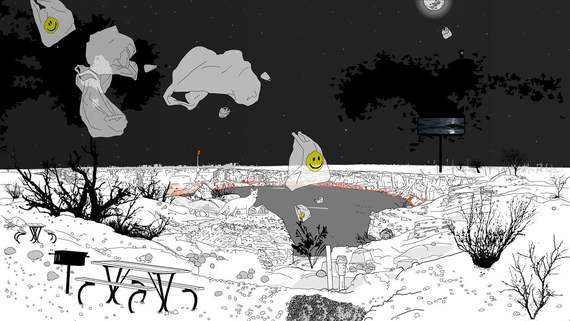When I was invited to sign a petition (see +ArtApp) requesting that Apple add an art category to the app store, my first reaction was one of surprise: to me, it's clear that artists are the ones who truly test and expand the boundaries of what Apple's machines can do. I whipped out my phone, swiped through, and found that indeed, there was no art category.
No emerging technology is benign, and artists know this better than anyone. Politicians are the last to understand new technology, as evidenced by the serious lag time of any recent relevant legislation. Artists' critical engagement is key to ensuring that the tools that we ultimately embrace will be as human-centric, open, and creatively engaged as possible. They are the ones poking around the boundaries of what is possible. Allison Burtch does this by creating beautifully designed boxes that block iPhone mics in the radius around them, providing a space for something approaching pre-Snowden levels of personal information ownership. Or looking at larger environmental issues, Marina Zurkow probes the psychological space of impending environmental hardship with equal parts alarm and wonder, realizing her vision through digital inventiveness.
Allison and Marina are alums of my organization, Eyebeam. We are an institution committed to fusing the arts with technology. We bring together artists and technologists on a daily basis to imagine the potential these machines have on our lives and create new tools based on values of openness. To have a center that explicitly champions this coming together and exploration was, and continues to be, vital. At this point the questions are different than when Eyebeam was born. In our last residency call, we included focus questions such as, "What is the relationship between race and online space?" and "How does emerging technology influence notions of self?" It's not a matter of the technology being something outside of us any longer; it's within us all. And we need artists to help us understand what this means. In my job as Director, getting to hang around these tool creators, visual artists, sound designers, technologists, and engineers is inspiring and energizing. I wish everyone could have the chance to eavesdrop on some of their fascinating conversations.
2017 will mark the 20th anniversary of our Brooklyn institution. And while it is a big deal for us, we are only one actor in the tidal wave of change. Ubiquitous computing is involved in every aspect of our lives. The naiveté of those early days in the late 90's is completely gone, and with widespread concerns about information ownership, bio-scanning, algorithmic decision-making, we need creative practitioners in the arts, engineering, sciences to unite. Together they can realize the goal of more humane computational practices, ensuring broad understanding of the positive potential of tools to augment our human-ness.
----
On December 16, Eyebeam will hold its first ever auction and holiday party at Postmasters Gallery, in Manhattan. The event brings together a unique gathering of artists, collectors, and technologists who are developing new works and tools to establish the next generation of contemporary art. Visit this link to learn more.
